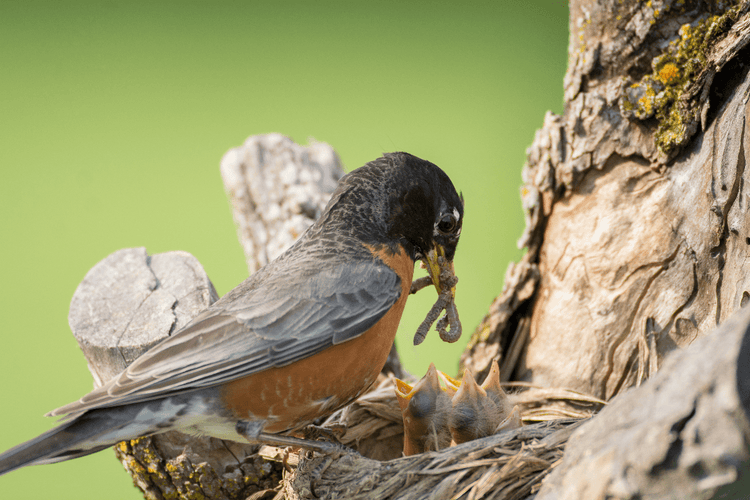
How to Help a Baby Bird with Sour Crop
One of the most common problems that send a baby bird to the vet is a condition called “sour crop.” Sour crop is actually “crop stasis,” a condition in which the baby has a crop – or gullet – full of hand-feeding formula that has gone bad. The term “sour crop” describes the condition of the crop’s contents, but it’s rarely a disease unto itself. In the vast majority of cases it’s actually a symptom of other illness.
The danger of crop stasis comes from the spoiled food itself. Just as any other kind of food will go bad if it’s left in a warm room for too long, so undigested formula will accumulate toxins and bacteria – and threaten the bird’s life.
Crop stasis is a condition in which the crop ceases to function. In other words, the crop stops emptying. An owner will approach the baby for a scheduled feeding and observe that most or all of the food from the previous feeding is still there. It’s important to mention here that you should never give additional food to a baby that still has a full crop. Crop stasis is an emergency situation and you should call your veterinarian immediately.
Treating Sour Crop in Birds
So, how does a veterinarian go about treating the condition? In order to stabilize the patient, the spoiled food must be removed – as quickly as possible. In most patients, formula can be removed through a feeding tube passed orally. Depending on the particle size of the formula, either a standard red rubber or a ball-tipped metal feeding tube can be introduced into the crop. The crop contents can then be sucked out.
Sometimes, though, the doctor will have to thin the spoiled formula by introducing warm water or electrolyte solutions into the crop before removing the food. The crop is then gently massaged and the contents aspirated. It is important to palpate the tube in the crop during aspiration to prevent the crop wall from being suctioned against the end of the feeding tube. Once the crop has been reasonably emptied, it should be rinsed by repeatedly filling it with a warm balanced electrolyte solution, massaging the crop and mixing its contents, and aspirating the fluid until clear.
Dehydration and Sour Crop in Birds
The vast majority of babies presented for crop stasis will be moderately to severely dehydrated. The lack of fluid intake from the static crop combined with the continued high fluid losses that accompany much pediatric illness results in fluid deficits that can be life threatening. So, once the crop has been emptied, the vet will tend to the fluid needs of the patient, usually delivering fluids intravenously.
Babies that have not fully feathered often require environmental temperatures of 85 to 90 degrees Fahrenheit. Those that are ill are less able to thermoregulate. So, your vet should take special care to make sure hospitalized patients are kept warm. High humidity should also be maintained to avoid contributing to dehydration.
As far as drugs are concerned, the bacterial overgrowth in the crop and the remainder of the gastrointestinal system (GI) must be addressed. While antifungals may ultimately be useful, antibacterials are far more urgently needed.
Once first aid has been provided, your veterinarian should perform a detailed physical exam and collect appropriate samples for a thorough diagnostic evaluation. Remember, crop stasis is a symptom, not a disease, so the underlying problem must be identified and resolved if the baby is to thrive.